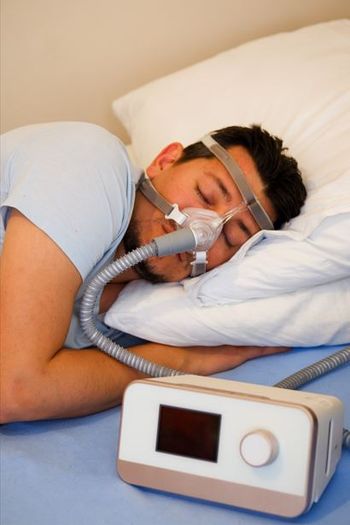
Marginal Benefit for Investigational Venous Thromboembolism Drug
AMSTERDAM -- Mixed results from trials investigating the clinical efficacy of idraparinux, an investigational long-acting factor X inhibitor, suggest the drug is not as effective as standard therapy for treatment of pulmonary embolism.
AMSTERDAM, Sept. 12 -- Mixed results from trials investigating the clinical efficacy of idraparinux, an investigational long-acting factor X inhibitor, suggest the drug is not as effective for pulmonary embolism as standard therapy.
Moreover, although idraparinux prevented recurrent thromboembolism when used for extended prophylaxis, the price for that protection was a three-fold increase in the risk of major bleeding, according to two reports by the same group in the Sept. 13 issue of the New England Journal of Medicine.
The open-label non-inferiority trials randomized 2,904 deep venous thrombosis patients and 2,215 pulmonary embolism patients to treatment with unfractionated heparin or low molecular weight heparin followed by an adjusted dose vitamin K antagonist for either three months or six months or subcutaneous idraparinux (2.5 mg once a week) for three months or six months.
In the DVT trial, the rate of recurrence at day 92 was 2.9% in the idraparinux arm and 3.0% in the standard therapy arm, wrote Harry R. Buller, M.D., of the Academic Medical Center here for the van Gogh Investigators. The rate of clinically significant bleeding at six months was 4.5% in the idraparinux arm versus 7.0% in the standard therapy arm (P=0.004).
That contrasted sharply with a 2,215-patient open-label pulmonary embolism trial in which the rate of recurrence at three months was 3.4% in the in idraparinux arm versus 1.6% in the standard therapy arm, they wrote.
"If the apparent difference in efficacy that we observed in our trials is real, this observation challenges the concept that the same anticoagulant regimen is adequate for both deep venous thrombosis and pulmonary embolism," they wrote. They added that "a plausible explanation for the differences is lacking, especially since many patients with deep venous thrombosis probably had concurrent asymptomatic pulmonary embolism."
The authors noted, too, that in the pulmonary embolism study the recurrence rate in the standard therapy arm was less than the rate reported in other studies.
And while the drug demonstrated significant efficacy for prevention of recurrent venous thromboembolism when compared with placebo in a six-month extended prophylaxis study-1% recurrence versus 3.7% (P=0.002)-the major bleeding rate was 1.9% in the idraparinux arm versus 0% in placebo (P=0.002), the van Gogh investigators reported.
When the data from the extended prophylaxis trial were analyzed according to initial therapy, the recurrence rate for patients whose initial therapy was idraparinux was 0.7% versus a 5.9% recurrence rate among those whose initial treatment was a vitamin K antagonist, but the major bleeding rate was again higher with idraparinux, 3.1% versus 0.9%.
The extended prophylaxis trial assigned 1,215 patients who had six months of standard therapy or idraparinux to six months of weekly 2.5 mg injections of idraparinux or placebo.
The authors cited the double-blind, randomized design as strength of the extended prophylaxis study, because it "minimized the risk of bias in reporting and assessment of recurrences and bleeding complications."
But they concluded that the net clinical benefit of idraparinux for extended prophylaxis was "marginal."
Newsletter
Enhance your clinical practice with the Patient Care newsletter, offering the latest evidence-based guidelines, diagnostic insights, and treatment strategies for primary care physicians.



















































































































































































































































































